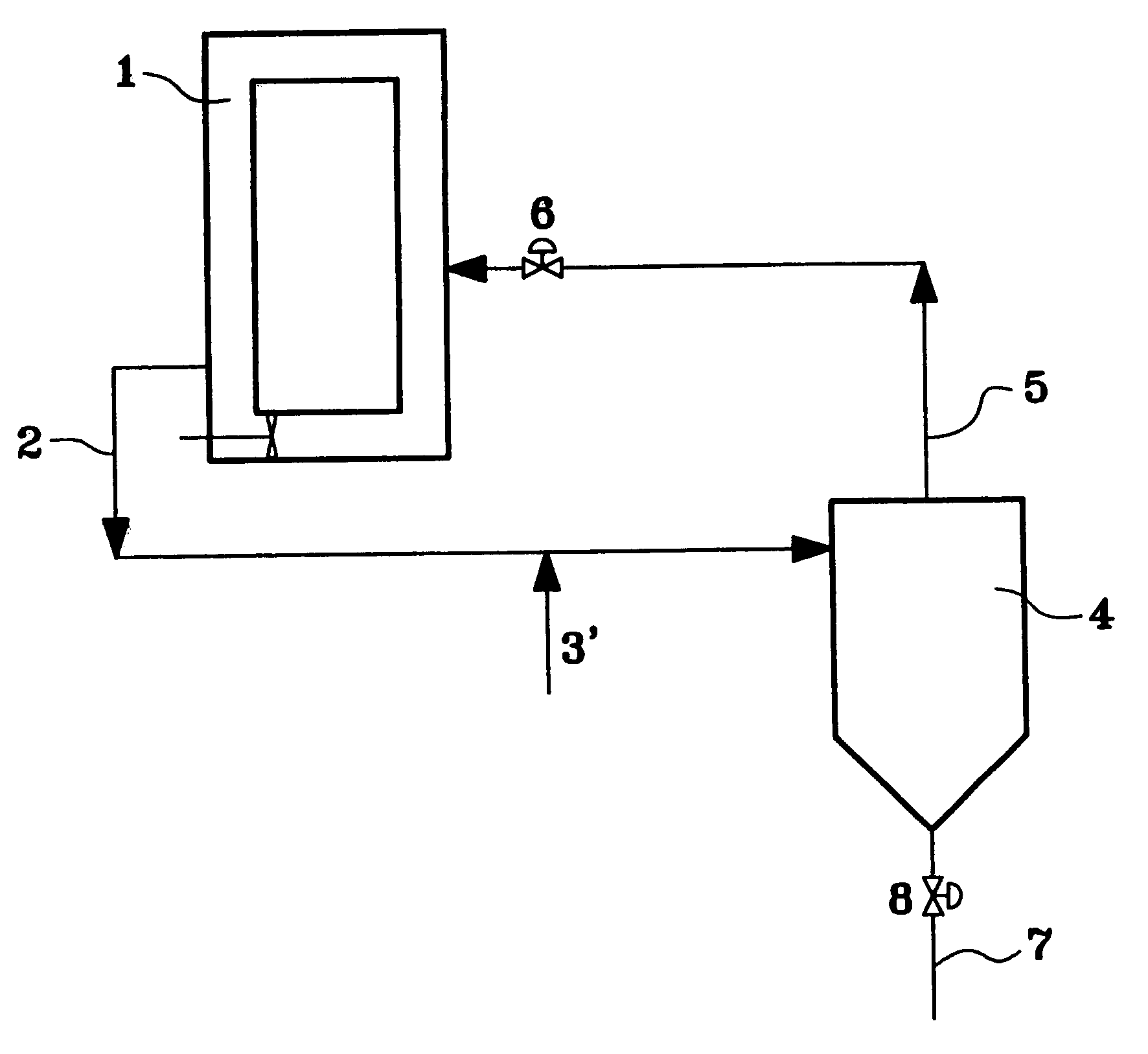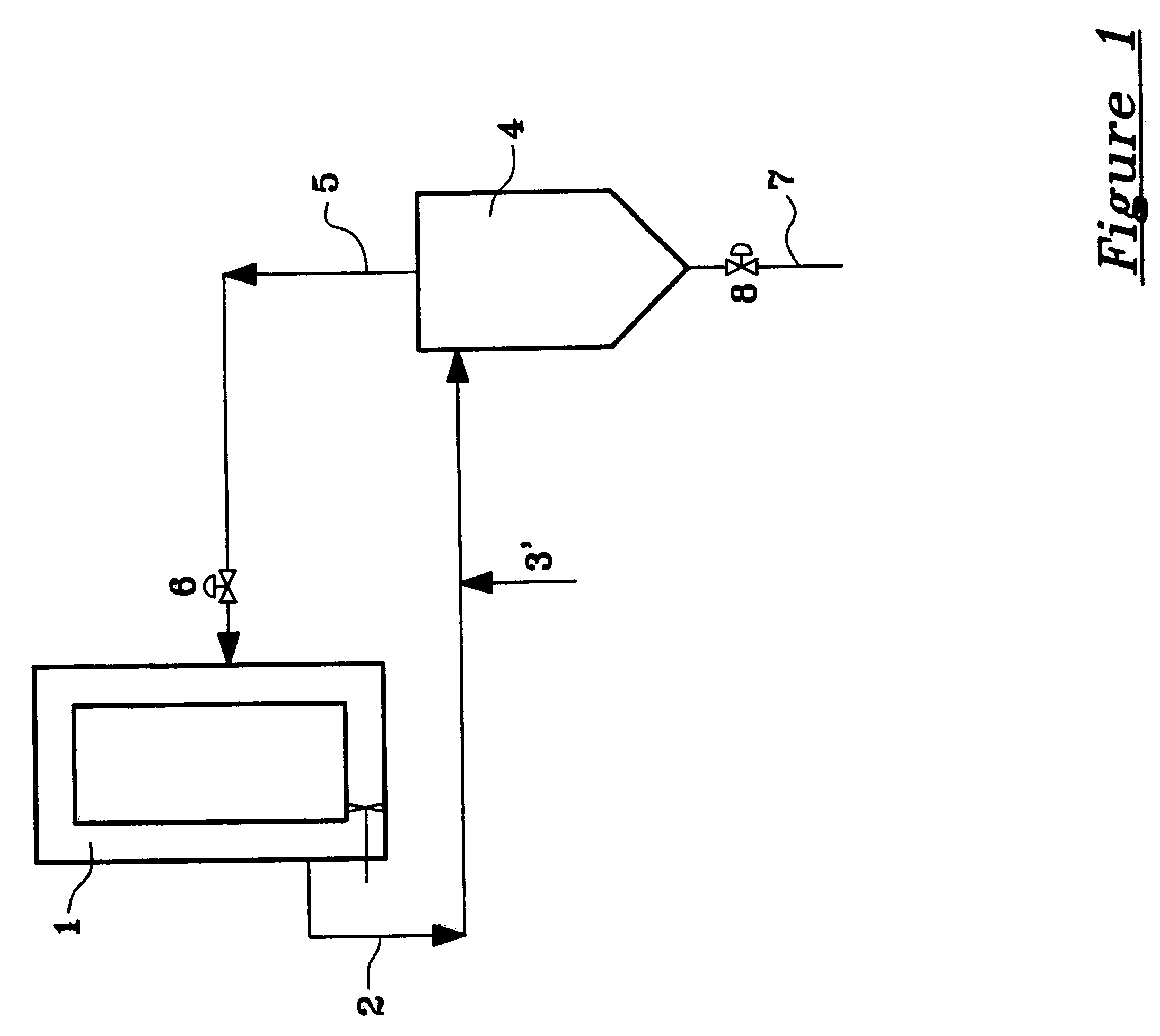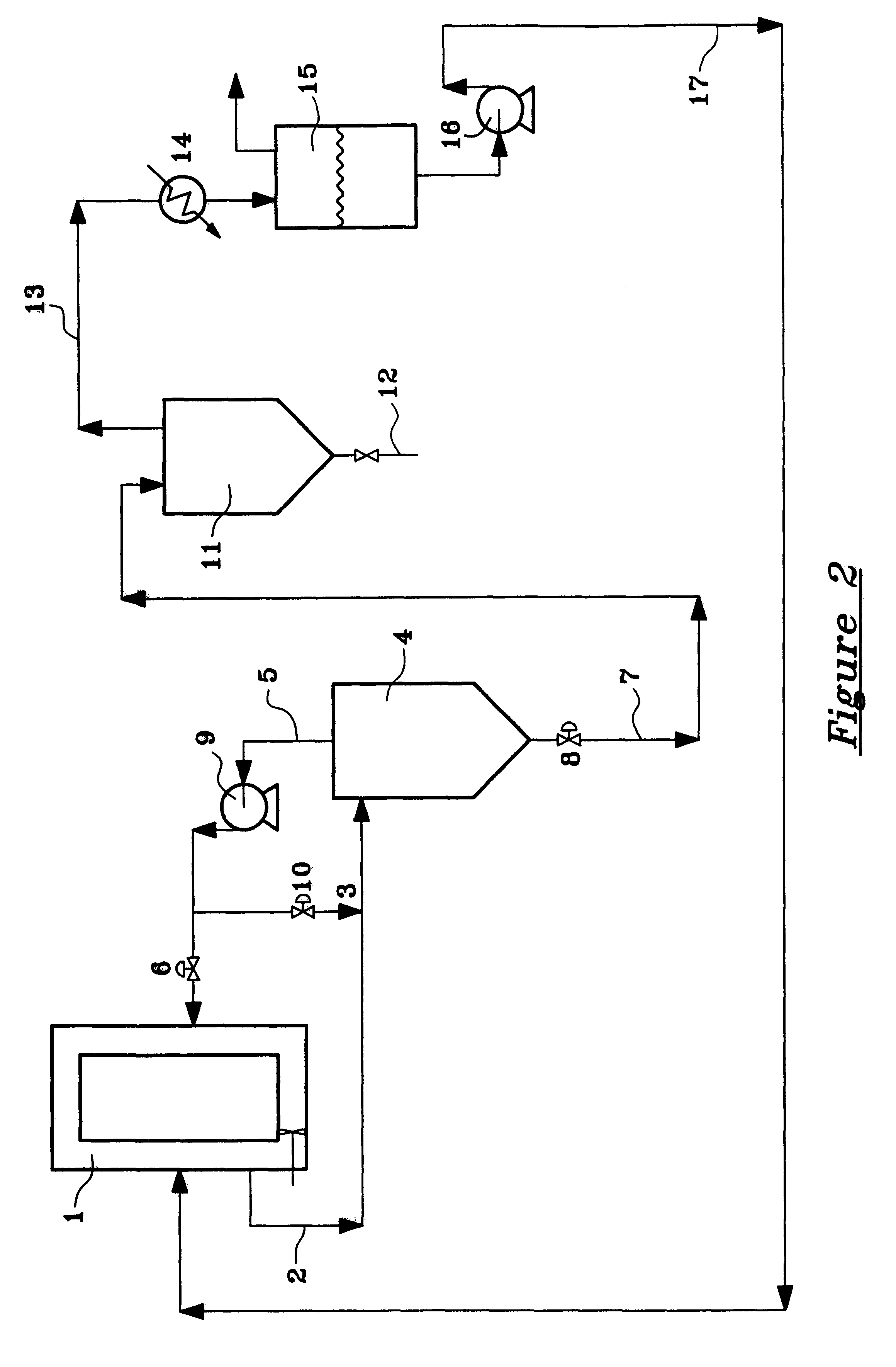Process for manufacturing olefin polymers
a technology of olefin polymer and manufacturing process, which is applied in the direction of chemical/physical/physical-chemical processes, chemical apparatus and processes, chemical/physical processes, etc., can solve the problems of difficult period of discharging from the reactor, large amount of suspension drawn off, and easy blockage of valve isolating the settling legs, etc., to achieve the effect of reducing the amount of diluent and other reactants
- Summary
- Abstract
- Description
- Claims
- Application Information
AI Technical Summary
Benefits of technology
Problems solved by technology
Method used
Image
Examples
example 2
(Not According to the Invention)
The process described in Example 1 was repeated except that the suspension drawn off from the polymerization reactor was not diluted by means of isobutane. The suspension drawn off from the polymerization reactor 1, comprising approximately 50% by weight of polymer particles, was sent directly into the hydrocyclone separator 4. The operation of the hydrocyclone separator was adjusted by means of the control valves 6 and 8 so as to obtain a concentrated suspension leaving the hydrocyclone separator via the line 7 at a rate of 17 tonnes / h, comprising 59% by weight of polymer particles. The stream (F) leaving the hydrocyclone separator via the line 5 at a rate of 3 tonnes / h was entirely recycled to the polymerization reactor 1; it comprised essentially isobutane. The concentrated suspension had an ethylene content of 10% by volume. For a production of 10 tonnes of polyethylene per hour, the amounts of isobutane and ethylene to be separated and to be trea...
comparing examples 1 and 2
shows that the process according to the invention makes it possible to obtain a concentrated suspension of polymer 2-particles having a greatly reduced ethylene content. In this way, the amount of ethylene to be subsequently separated from the polymer particles and from the diluent is greatly reduced.
example 3
(Not According to the Invention)
The process described in Example 1 was repeated except that the transfer into a hydrocyclone separator was omitted.
The suspension drawn off from the polymerization reactor comprised approximately 50% by weight of polymer particles. For a production of 10 tonnes of polyethylene per hour, the amounts of isobutane and ethylene to be recycled were approximately 10 tonnes / hour and 0.5 tonnes / hour, respectively.
PUM
| Property | Measurement | Unit |
|---|---|---|
| Angle | aaaaa | aaaaa |
| Temperature | aaaaa | aaaaa |
| Pressure | aaaaa | aaaaa |
Abstract
Description
Claims
Application Information
 Login to View More
Login to View More - R&D
- Intellectual Property
- Life Sciences
- Materials
- Tech Scout
- Unparalleled Data Quality
- Higher Quality Content
- 60% Fewer Hallucinations
Browse by: Latest US Patents, China's latest patents, Technical Efficacy Thesaurus, Application Domain, Technology Topic, Popular Technical Reports.
© 2025 PatSnap. All rights reserved.Legal|Privacy policy|Modern Slavery Act Transparency Statement|Sitemap|About US| Contact US: help@patsnap.com



